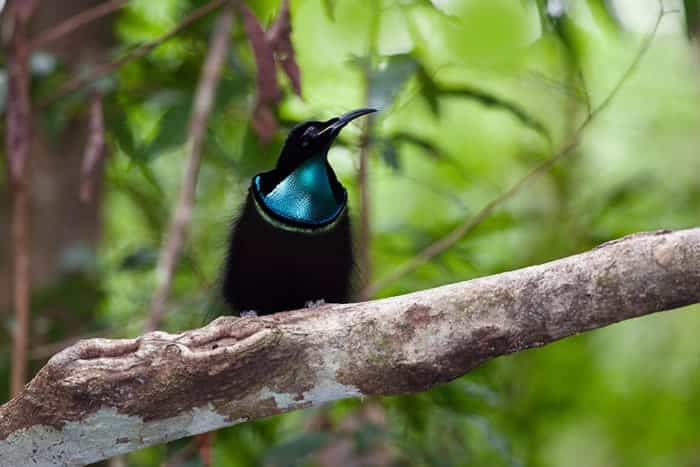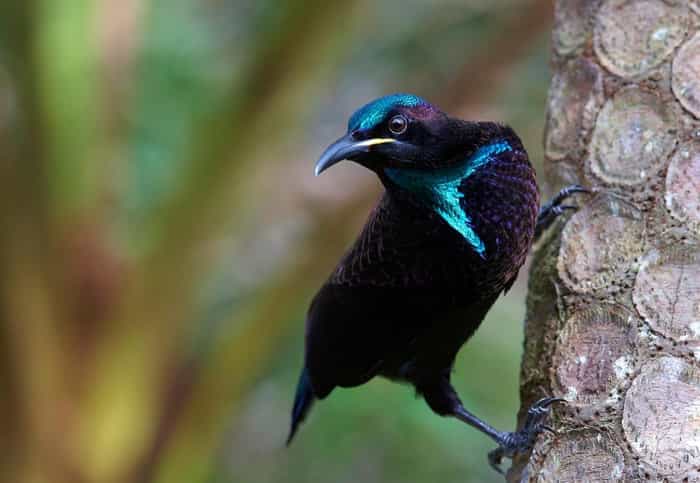Victoria’s riflebird is just out here dominating

Bec Crew
Bec Crew

This extravagent, weird, and fearless little bird is here to be seen, and he will steal your girl when you’re not looking with his flamboyant and satisfyingly symmetrical displays.
Endemic to the Atherton Tableland region of north-eastern Queensland, which is part of Australia’s Great Dividing Range, Victoria’s riflebird is known as duwuduwu to the local Aboriginal people.
The species is one of just a few birds-of-paradise that are found in Australia, including the paradise riflebird (Ptiloris paradiseus) from the rainforests of NSW and central Queensland; the trumpet Manucode (Manucodia keraudrenii), found in the Cape York Peninsula; and the magnificent riflebird (Ptiloris magnificus), another Cape York Peninsula resident that really does live up to its name.
Because look at this thing, the sheen on its chest:

Most of the 42 known species are in the rugged lowland forests of New Guinea, including Wilson’s bird-of-paradise (Cicinnurus respublica), a stunner with his bright red back, yellow cape, shimmering green chest, blue feet, and naked turquoise crown.
You might not think Victoria’s riflebird has much by the way of incredible colours, based on the image above of a male doing his courtship display, but these birds are like living jewels.
That black plumage is actually an incredibly deep iridescent purple, and the males have flashes of brilliant turquoise running across their heads, chests, and tails.
Here’s a better view from the front:

The females, of course, are brown and not really worth talking about (sorry, females).
The smallest species of riflebird, Victoria’s riflebird measures between 23 and 25 cm, but what it lacks in size, it makes up for in presence.
When a male is trying to get a female’s attention, he will distort his body and puff out his feathers to highlight the turquoise patterning, which shines through the low light of the forest. He will fan out his wings and sway, dancing until a female draws close and allows herself to be embraced and mated with.
It’s such a complex ritual that juveniles have been observed practicing in their nest.
Oddly enough, while the birds-of-paradise family (Paradisaeidae) is revered the world over for its otherworldly beauty, not a whole lot is known about them. It doesn’t help that most of these birds are hidden away in some of the most remote and dense rainforests in the world, but a team from the Cornell Lab of Ornithology is determined to change that.
Check out the video below of their Birds-of-Paradise Project, which aims to figure out how these birds evolved to be like nothing else on Earth:




